Brown- or black-eyed susan
It’s been three years and counting but this is the first time I’ve shown a nice clear shot of a flowering Rudbeckia hirta, known as brown-eyed or black-eyed susan. The date was June 16th and the place was Great Hills Park.
Four months ago you saw the dry seed head remains of this species, and last year a colony of black-eyed susans appeared from a distance, and therefore individually tiny, as part of a panorama of mixed wildflowers.
© 2014 Steven Schwartzman

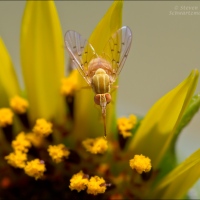
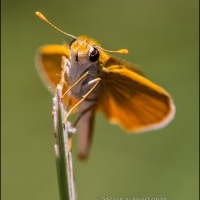
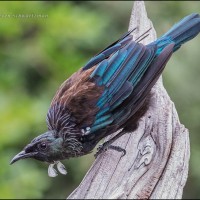
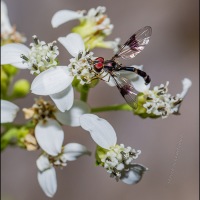
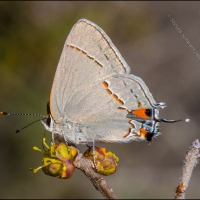
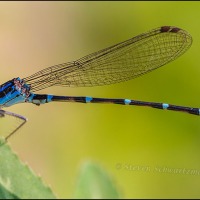

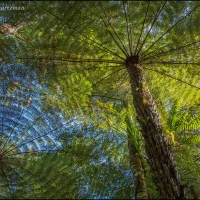
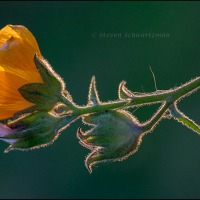
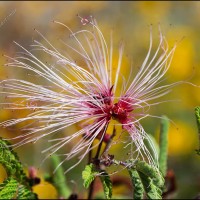
Beautiful flower! I love this flower but pity mine in my garden is not coming out yet. 🙂
Great shot!
Inge
August 7, 2014 at 6:10 AM
Just move to Texas, Inge, and bring your garden with you: then your flower should do fine.
Steve Schwartzman
August 7, 2014 at 8:03 AM
Eye-popping.
Gallivanta
August 7, 2014 at 6:34 AM
And all I had to do to make my eyes pop was go the half-mile to Great Hills Park to find this flower growing wild.
Steve Schwartzman
August 7, 2014 at 8:08 AM
We are seeing many of the variations of flowers looking like this. Roadsides and ditches are looking good.
Jim in IA
August 7, 2014 at 8:35 AM
That’s good news. You’re right that there are plenty of species that look generally like this, including about a dozen in the genus Rudbeckia alone.
Steve Schwartzman
August 7, 2014 at 10:02 AM
Beautiful…color, composition and the moment, somehow this one speaks!
shabnamphoto
August 7, 2014 at 10:44 AM
Then I’m glad you were listening, Shabnam.
Steve Schwartzman
August 7, 2014 at 11:16 AM
Brown-eyed or black-eyed Susan by name. But look at that purple “pupil”, and the little flecks of purple around it. It reminds me of a friend whose eyes are blue with brown flecks, and Steve McCurry’s famous photo of Sharbat Gula and her red-flecked eyes. I’m anxious to find some of the rudbeckia and see if the “extra” color is visible without the camera lens.
shoreacres
August 7, 2014 at 8:16 PM
You raise a good question. My impression is that the color must have been there in reality in order for the camera’s sensor and the digital processing to have brought it out, but that may be simplistic. If you do find one of these this season (although I think most or all are gone now), please let me know what you discover about its colors.
Steve Schwartzman
August 7, 2014 at 10:10 PM
I love the lush color and the texture you captured in your image…It makes it real for me, as if I was standing in the garden and seeing it in the early morning light.
Charlie@Seattle Trekker
August 8, 2014 at 12:48 AM
That’s quite a compliment, Charlie. Thanks. A technical consideration that may explain why you felt you were looking at this in early morning light is that I used an aperture of f/6.3, which is relatively wide among my pictures as a whole, and it rendered the background softly.
Steve Schwartzman
August 8, 2014 at 7:38 AM
Like Linda, I have seen the hint of purple in these at times. Ours are still going strong, but I have only shot a dewy bud so far this year. I’ll have to correct that soon.
Nice image, Steve.
Steve Gingold
August 8, 2014 at 4:27 AM
There’s that difference in latitude again: in Massachusetts your susans are still going strong, but ours have come and long since gone now that this is the hottest part of the year. We look forward to seeing your take on one of these flower heads, especially if you manage to find and bring out that hint of purple.
Steve Schwartzman
August 8, 2014 at 7:42 AM
[…] other day, Steve Schwartzman suggested that I share some Black-eyed Susan images in the comments on his post of the same subject. In searching my library on WP, I was surprised that I have not shared any until now. So here […]
08.10.2014 Black-eyed Susan | Stephen Gingold Nature Photography Blog
August 10, 2014 at 11:38 AM
[…] Steve Schwartzman did it on August 7 … and then Stephen Gingold did it shortly thereafter on August 10. So now, […]
The sincerest form of flattery | Welcome to Pairodox Farm
August 15, 2014 at 9:23 AM
This is my favorite flower, and I think it is a color feast with brown, black, purple, yellow, red, gold and green! I usually call them Brown-Eyed Susans because I am a brown-eyed Lucy. Thanks for this beautiful portrait of this wildflower.
LucyJartz
August 20, 2014 at 7:52 AM
You’re welcome. It turns out that a lot of people have a fondness for this wildflower, which I’m glad is native in Austin, where I live.
Steve Schwartzman
August 20, 2014 at 8:09 AM
I will look for it near Corsicana. It is beautiful.
LucyJartz
August 20, 2014 at 8:11 AM
It’s probably too late this year to find many of these, but you might still come across a few stray individuals.
Steve Schwartzman
August 20, 2014 at 9:06 AM
[…] coneflower, Dracopis amplexicaulis. You might think you’re seeing a Mexican hat or perhaps a brown-eyed susan, which does look similar except that here the “eye” is green. Distinct from either of […]
Clasping-leaf coneflower and bluets | Portraits of Wildflowers
August 5, 2015 at 5:32 AM
[…] Dracopis amplexicaulis, called clasping-leaf coneflower. Its flower heads look like those of the brown-eyed (or black-eyed) susan and the Mexican hat, but the leaves are quite different and really do clasp the plant’s […]
Red and yellow | Portraits of Wildflowers
May 18, 2016 at 5:06 AM
[…] of a clasping-leaf coneflower (Dracopis amplexicaulis) superficially resembles those of a black-eyed susan (Rudbeckia hirta) and a Mexican hat (Ratibida columnifera). In fact all three are in the sunflower […]
A closer look at a clasping-leaf coneflower | Portraits of Wildflowers
May 25, 2020 at 4:34 AM